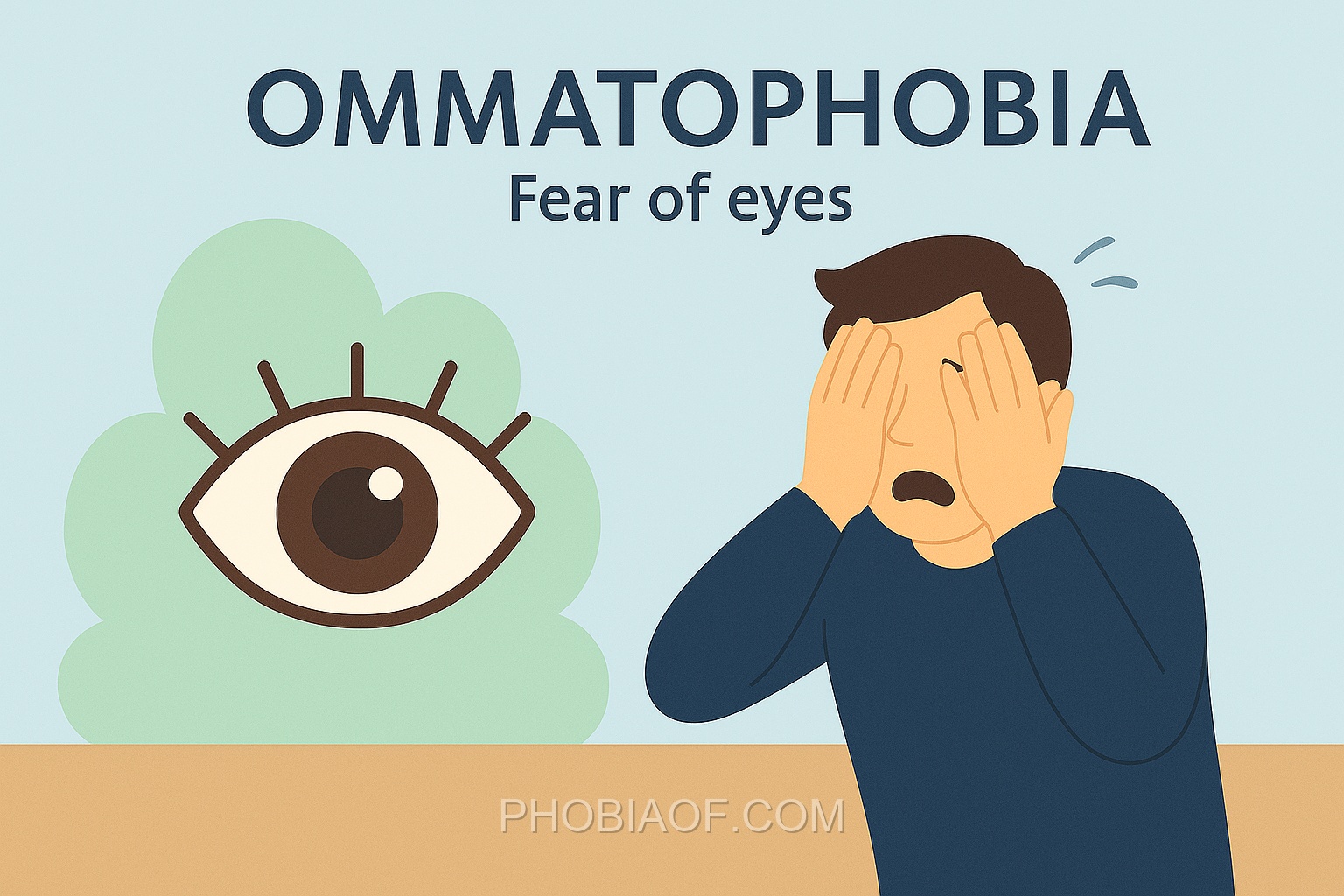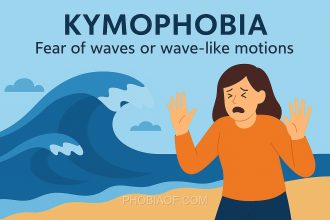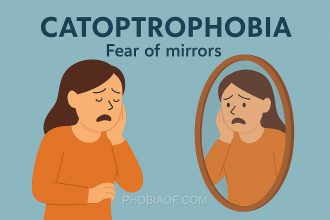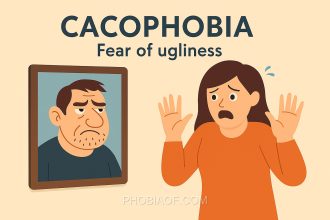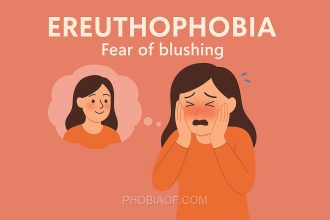Have you ever felt uneasy when someone looks directly into your eyes, or do you know someone who avoids eye contact altogether? This might be more than just shyness or social discomfort—it could be ommatophobia, the fear of eyes.
Ommatophobia is an intense and irrational fear of eyes. The term comes from the Greek word omma, meaning “eye,” and phobos, meaning “fear.” While it may seem unusual, this phobia can significantly impact a person’s daily life.
For those with ommatophobia, the fear can manifest in various ways, affecting their social interactions and emotional well-being. Here are some common ways it can affect people:
- Difficulty maintaining eye contact, leading to challenges in personal and professional relationships.
- Avoidance of situations where eye contact is expected, which can limit social opportunities.
- Anxiety or panic attacks triggered by the sight of eyes or even thinking about them.
Understanding ommatophobia is the first step toward empathy and support for those who struggle with this fear. By acknowledging the genuine distress it can cause, we can help create a more understanding and accommodating environment for everyone.
Causes of Ommatophobia
Ommatophobia, the fear of eyes, can stem from a variety of causes. Understanding these potential origins can help in addressing and managing the phobia effectively. Below are some common reasons why someone might develop this fear.
- Genetic Predisposition: Some individuals may have a genetic tendency to develop phobias, including ommatophobia. If anxiety disorders or specific phobias run in the family, there might be a higher risk of developing similar issues.
- Traumatic Experiences: A negative or traumatic experience involving eyes can trigger ommatophobia. This could be due to an injury, a medical procedure, or witnessing something distressing related to eyes.
- Learned Behavior: Observing the behavior of others who exhibit fear of eyes can lead to developing the same phobia. For example, if a parent or close family member shows fear or discomfort around eyes, a child might learn to associate eyes with something to be feared.
- Psychological Factors: Underlying anxiety disorders might contribute to the development of specific phobias like ommatophobia. Individuals with a general tendency towards anxiety may be more susceptible to developing irrational fears.
- Environmental Factors: Cultural or societal influences can also play a role. Certain cultural beliefs or superstitions about eyes might foster a fear of them.
While these factors can contribute to the development of ommatophobia, it’s important to note that each individual’s experience is unique. Research continues to explore the origins of phobias, with some theories suggesting that evolutionary factors might make certain fears more common as a survival mechanism.
Understanding the causes of ommatophobia is crucial in seeking appropriate treatment and support. Cognitive-behavioral therapy and exposure therapy are common approaches that can help individuals overcome their fear by gradually changing their response to the feared object.
Symptoms of Ommatophobia
Ommatophobia, the fear of eyes, can cause intense fear or anxiety that can be debilitating. Individuals suffering from this phobia might experience a range of physical and emotional symptoms. Recognizing these symptoms in oneself or others is the first step towards seeking help and managing the condition. Below are common symptoms seen in those with ommatophobia:
- Physical Symptoms
- Intense panic attacks when exposed to eyes or even thinking about eyes
- Excessive sweating, especially when near eyes or eye-related stimuli
- Rapid heartbeat and palpitations during exposure to triggering situations
- Shortness of breath or hyperventilation when confronted with eyes
- Feeling dizzy or lightheaded when thinking about or seeing eyes
- Trembling or shaking when faced with the fear-inducing object
- Emotional and Behavioral Symptoms
- Overwhelming dread or terror when thinking about or seeing eyes
- Strong desire to avoid situations where eyes are present, leading to avoidance behavior
- Feeling detached from reality or oneself during episodes of intense fear
- Constant worry about encountering eyes, which can lead to heightened anxiety
- Difficulty concentrating or thinking clearly when in situations involving eyes
When ommatophobia is severe, these symptoms can significantly interfere with daily activities, affecting personal and professional life, and necessitating professional intervention for management and treatment.
Treatment for Fear of Eyes
Ommatophobia, or the fear of eyes, can be a challenging experience, but it’s important to know that this phobia can be treated and managed over time. With the right support and strategies, individuals can overcome their fear and lead fulfilling lives.
Proven Therapies
There are several therapeutic approaches that have been proven effective in treating ommatophobia:
- Exposure Therapy: This involves gradually facing the fear of eyes in a controlled and safe environment. Starting with less intimidating situations and progressively working towards more challenging ones can help reduce anxiety over time.
- Cognitive-Behavioral Therapy (CBT): CBT helps individuals change fearful thoughts and patterns associated with their phobia. By restructuring negative thoughts, individuals can develop healthier responses to their fear.
- Counseling: Speaking with a mental health professional can provide personalized strategies and emotional support, helping individuals understand and manage their phobia.
Self-Help Coping Techniques
In addition to professional therapy, there are self-help techniques that can complement treatment:
- Relaxation Exercises: Techniques such as deep breathing, progressive muscle relaxation, or guided imagery can help reduce anxiety and promote a sense of calm.
- Meditation: Practicing mindfulness meditation can enhance self-awareness and reduce stress, making it easier to manage phobic reactions.
- Support Groups: Joining a support group can provide a sense of community and shared experiences, offering encouragement and practical advice from others facing similar challenges.
Medication
In severe cases, medication such as anti-anxiety medication might be prescribed to manage symptoms, but the focus should remain on therapy and building coping skills for long-term success.
If ommatophobia is interfering with your daily life, it’s important to seek professional help. A mental health professional can guide you through the appropriate treatment options and provide support throughout your journey to overcoming this fear.
Remember, you are not alone in this, and with commitment and the right strategies, you can manage and eventually overcome your fear of eyes.
Conclusion
Understanding ommatophobia, the fear of eyes, begins with recognizing its causes and symptoms, which can empower you to take meaningful steps toward addressing this phobia. By identifying the triggers and manifestations of your fear, you can better articulate your experiences and seek appropriate support.
It’s important to remember that you are not alone, and many people have successfully managed or overcome their phobias through time and with the right help. Whether it’s through therapy, self-help strategies, or a combination of approaches, there are numerous pathways to finding relief and building resilience against the fear of eyes.
We encourage you to consider reaching out to a mental health professional or talking to a doctor if you feel overwhelmed. Professional guidance can provide you with tailored strategies and support, helping you navigate the journey toward overcoming ommatophobia with confidence and hope.
Remember, facing a phobia is a courageous step, and with patience and support, you can move towards a more comfortable and fear-free life.
